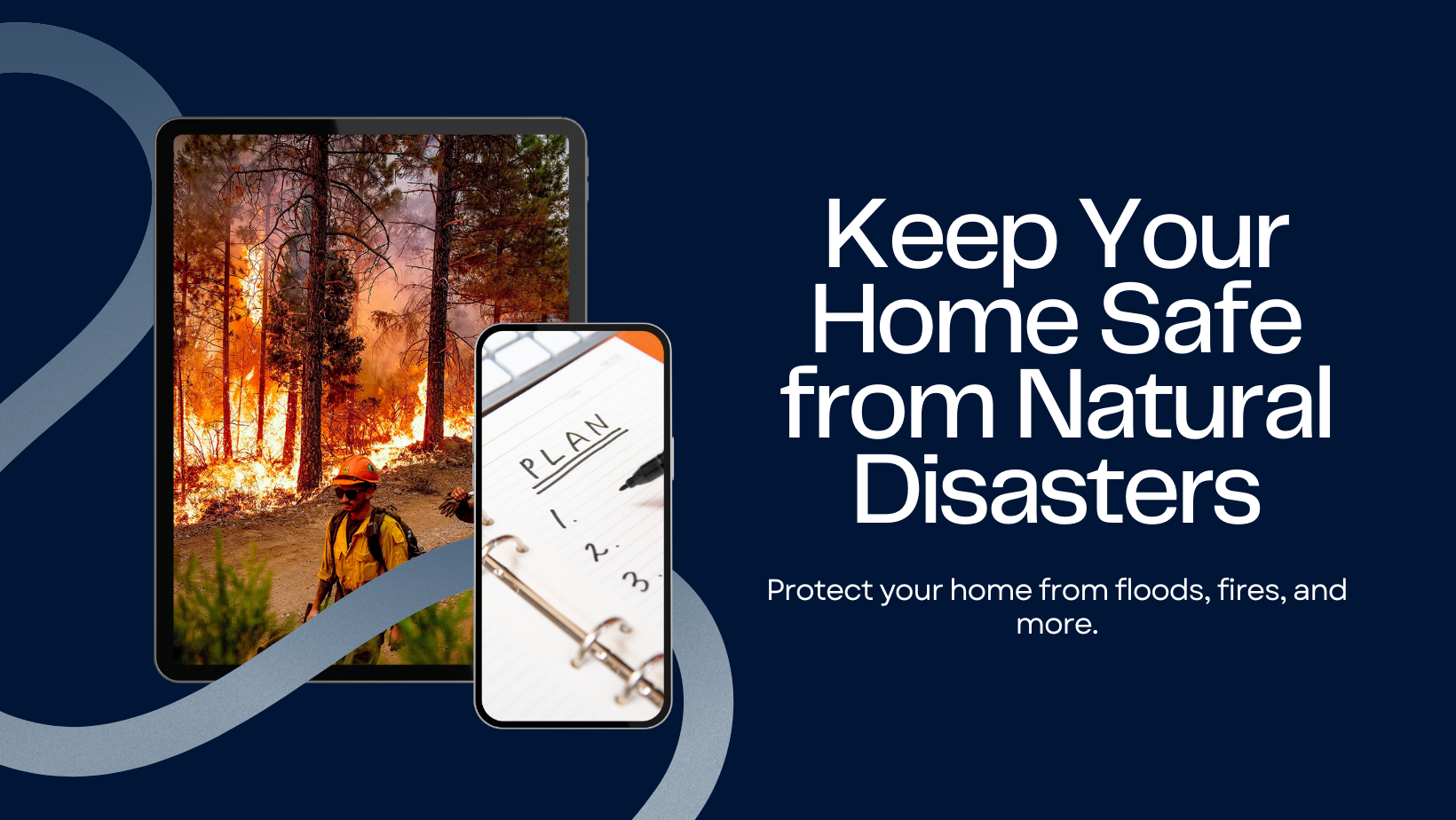As a real estate broker with over 40 years of experience in Fallbrook, California, I have seen the beauty and growth of our community. However, I am also acutely aware of our region’s risks. Climate change and natural disasters pose significant threats to our properties, and homeowners must be prepared for these challenges. Let’s discuss protecting your home from hazards like wildfires, floods, and earthquakes.
Wildfires
Fallbrook faces a severe risk from wildfires, with 8,681 properties at risk within the next 30 years. Homeowners should take the following actions to reduce the damage that wildfires cause:
- Create a defensible space: Maintain a 100-foot buffer zone around your home by clearing dry leaves, dead plants, and other flammable materials. This space will act as a barrier, helping to slow the spread of flames, protect your home from flying embers and allow safe access for firefighters. For more information, go to the Cal Fire website at www.fire.ca.gov
- Choose fire-resistant materials: When constructing or renovating your home, opt for fire-resistant materials such as metal, tile, or asphalt shingles for the roof and stucco, brick, or fiber-cement siding for the exterior walls.
- Install ember-resistant vents: Replace standard vents with ember-resistant vents designed to prevent burning embers from entering your home and igniting materials.
Floods
Approximately 515 properties in Fallbrook could be severely affected by flooding over the next 30 years. To protect your home from flood damage, consider the following:
- Elevate critical utilities: Raise electrical panels, water heaters, and other vital utilities above the projected flood level to prevent damage during a flood.
- Install a sump pump: A sump pump can help remove water from your basement or crawl space, reducing the risk of flooding.
- Consider flood-resistant landscaping: Use native plants that can tolerate wet conditions and absorb excess water to help reduce the risk of flooding on your property.
- Mitigate water around your home. The next time it rains, pay attention to where the water travels and drains from the roof and surrounding property. Ensure your home has proper grading away from the house so water will drain correctly and rain gutters have adequate drainage. If you live near a flood plain, make sure the area is clear of debris and brush that clog drains and would prevent water from flowing through your property.
Earthquakes
While Fallbrook is not in a high-risk earthquake zone, the potential for seismic activity still exists. Take these steps to protect your home from earthquake damage:
- Retrofit your home: If your home was built before current building codes, consider retrofitting to improve structural stability. This may include reinforcing the foundation, adding shear walls, and bracing cripple walls.
- Secure heavy items: Fasten large furniture, such as bookcases and dressers, to the wall to prevent them from toppling during an earthquake. Secure appliances with straps or cables, such as refrigerators and water heaters.
- Review your insurance policy: Standard homeowners’ insurance policies do not cover earthquake damage. Consider purchasing earthquake insurance to protect your investment.
General Preparedness
In addition to the specific measures mentioned above, there are several general preparedness steps that homeowners can take to protect their properties from natural disasters:
- Develop an emergency plan: Create a family emergency plan that includes evacuation routes, meeting points, and a list of emergency contacts.
- Assemble an emergency kit: Prepare a kit with essentials such as water, non-perishable food, a first-aid kit, a flashlight, batteries, and essential documents in waterproof containers. Consider some basic items you might need if you have to evacuate, like a toothbrush, shampoo, socks, and sunscreen.
- Stay informed: Sign up for emergency alerts from local authorities and monitor weather reports to stay up-to-date on potential threats.
- Participate in community preparedness efforts: Get involved with local organizations, such as the Fallbrook Community Emergency Response Team (CERT), to learn more about disaster preparedness and response.
The risks posed by natural disasters and climate change are real, and homeowners in Fallbrook must take proactive measures to protect their properties and investments. You can reduce the potential damage from earthquakes, floods, and wildfires by following the advice in this article. As a community, we can work together to build resilience and adapt to the challenges presented by our environment.


